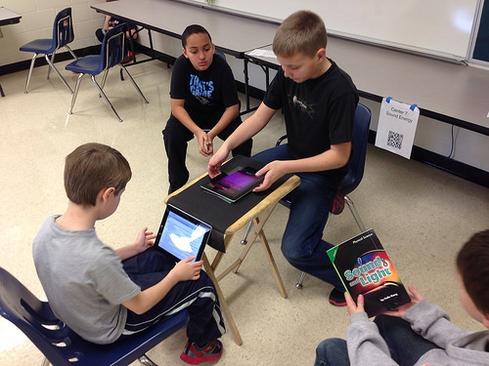5 Education Tech Trends For 2015
Education is being flipped on its head by technology. Teachers see the promise -- and the pitfalls.

This is an exciting time to be in education technology. The global spend on edtech in classrooms is on the rise, fueling a market that is projected to reach $19 billion by 2018, according to a market study released by Futuresource Consulting earlier this year. As blended learning environments evolve, administrators and teachers continue to celebrate the promise of digital learning and experience the pitfalls of underwhelming edtech tools. Below are five edtech trends and opportunities for developers of these tools to consider.
Technology for flipped-learning
The rationale behind the flipped class -- a form of blended learning in which students learn content online by watching video lectures, usually at home, and homework is done in class with teachers and students discussing and solving questions -- is to engage learners in and out of the classroom. The dynamic nature of this approach enables teachers to create effective and fun asynchronous and synchronous learning experiences.
Experts agree that passive learning with video doesn't boost student achievement. As flipped learning becomes more prevalent, the distribution tools and video streaming that are central to this approach must be optimized for interactivity. The stakes are higher than ever, with next-generation, cloud-based solutions displacing older learning management systems (LMS). Features such as powerful analytics that measure student responses and mobile learning capabilities will become the hallmarks of the best flipped classrooms.
[Check out 8 STEM Websites To Excite Kids About Tech.]
Device agnostic learning
While videos and websites are basically ubiquitous across all devices, many apps are native, even exclusive, to one device or mobile operating system. The pain points caused by multiple standards, multiple screen sizes, and multiple operating systems are not sustainable.
Teachers and students shouldn't bear the burden of device management. Their priorities should be centered on learning. The most innovative edtech creators realize that the future is to develop device agnostic services. As more and more teachers integrate mobile learning, this flexibility will be a requirement.
Assistive technologies in the classroom
Perhaps one of the greatest challenges for designers of software systems and technology products is to deliver a uniform experience to a large and diverse human population. Creators of edtech stand to benefit from ensuring that their products and services are designed to allow differently-abled students the same access to learning.
US federal accessibility standards pertaining to information technology, known as Section 508, should be a core design and development requirement, rather than an afterthought. A burgeoning industry continues to go beyond these baseline compliance standards, leading development of assistive technologies.
Earlier this month, world-renowned physicist Stephen Hawking made headlines with his commentary about the role of assistive technologies that support him. The same Fortune article cited a Gartner report issued in late 2013, estimating that approximately 15% of the world's population could benefit directly from assistive technologies -- and the rest of us will also feel a positive impact from the innovation behind them. It's clear that assistive technologies, ranging from simple to complex, are playing an increasingly vital role in reducing barriers to learning for students with a variety of special needs and challenges.
Mobile learning
Mobile learning apps were everywhere in 2014. This next year, we expect more mobile learning platforms and apps to be available on iOS and Android, along with heightened expectations related to enhanced learning experiences and outcomes. At its best, mobile learning technology can drive collaboration and engage different types of individual learners and various groups of interconnected learners.
My company, WizIQ, is heavily focused on how such technologies enable sturdier scaffolding for student learning and broaden the virtual classroom experience. Features such as live participation, location-aware notification delivery, and ubiquitous access are paving the way for context-aware adaptive and personalized mobile learning systems -- functionality that has the potential to fuel lifelong learning in an unprecedented way.
Personalized blended learning
Customization is king and the array of edtech tools that can meet the needs of students in a personalized, meaningful, and timely manner based on best practices stand to rule. But first, a word of advice to all creators of edtech tools: Technology isn't the driver. Your strong belief in your innovation is secondary to the needs of students, teachers, and administrators.
Recognize that teachers are tasked with implementing, and often times, identifying, the best mix of digital learning tools for each student. Different approaches to learning, such as project-based learning, maker education, game-based learning, and more, will continue to be explored as part of personalized blended learning models. Accordingly, such innovations will push edtech vendors to deliver more than technology or content -- but will require them to demonstrate how their product or service improves learning outcomes.
Get the latest information to migrate your systems, services, and applications to the next level at Enterprise Connect. Cisco, Microsoft, Avaya, and Oracle will lead the keynote lineup, and thought leaders from enterprises and vendors will cover the full range of platforms, services, and applications that will simplify your migration to next-gen communications and collaboration systems. Register for Enterprise Connect with code DIWKWEB to save $100 off the early-bird rate. It happens in Orlando, Fla., March 16 to 19.
About the Author(s)
You May Also Like







